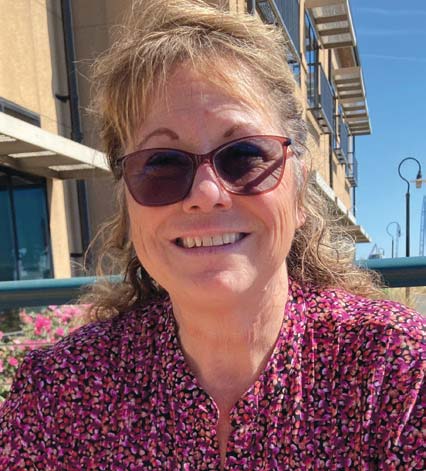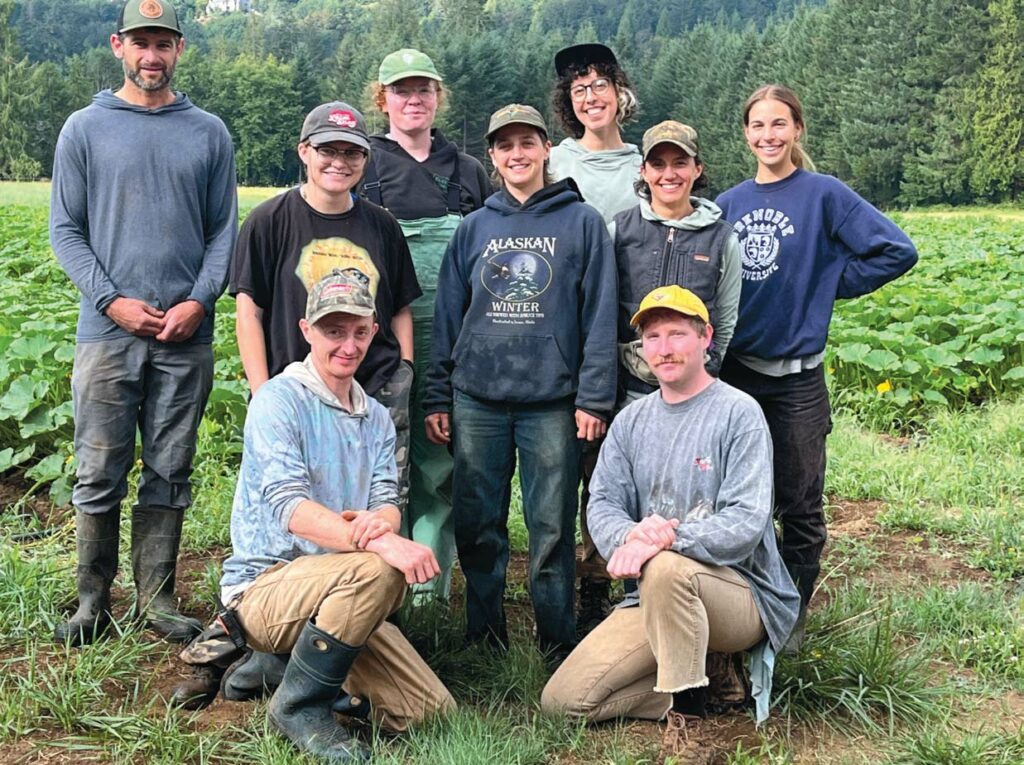
Images by Tracy Beard
Slow Food founder Carlo Petrini pioneered the concept of eco-gastronomy by determining that food and drink should be good, clean and fair. Petrini teaches communities to value, buy and eat seasonal, regional, and organic or biodynamic artisan commodities while considering their local agro-ecosystems. He encourages individuals to support small farms instead of relying on conventionally farmed, industrially produced, over-processed, and internationally shipped food.
This mindfulness towards food—and where it’s coming from—is at the heart of eco-gastronomy and the high-integrity practice at Flying Coyote Farm.
FLYING COYOTE FARM
Flying Coyote Farm a 37-acre Certified Organic farm in Sandy, Oregon, produces 100 unique and flavorful varieties of vegetables, fruits, herbs, flowers, and pasture-raised meat.
Founder Lili Tova started Flying Coyote Farm on three acres in her backyard. She farmed independently using biodynamic practices for the first few years, then partnered with Dan Sullivan and his farm to expand operations and become a Certified Organic producer.
Today, Lili, Dan, and their team farm eight and a half acres of vegetables and manage approximately 10 acres of pasture. They’re passionate about growing the highest-quality food and following detailed seasonal practices throughout the year to ensure their food’s sustainability.
During a recent interview with Lili, she shared the team’s approach to eco-gastronomy and their commitment to creating healthier communities, land, and people.
BUILDING A CERTIFIED ORGANIC FARM
How did you begin farming, and why did you go organic?
LT: I began gardening as a teenager. I was a mischievous youth, and farming offered me structure. In my twenties, I worked on a few farms and loved being outside and learning something new each day. It was important to feed myself better, so I became interested in production farming and attended a college program in Santa Cruz, California, where I learned about agroecology and sustainable food systems.
What are the requirements of an organic farm?
LT: To be certified, you must follow the certification rules, which require significant record-keeping and receipt tracking. We use many products that help increase our micronutrients and improve our soil biology. Initially, I thought that organic farming and gardening meant putting out a lot of compost—it is much more complicated than that.
It is vital to manage the nitrogen runoff, which can happen in both organic and industrial farming. Therefore, it is crucial to test the soil continually and interpret it correctly; the healthier your crops, the less work they require. Healthy crops discourage pests and protect against weeds. Understanding your soil is imperative. It is essential to know if the soil can break down fertilizers so that the plants can access the nutrients. “Organic farming” is not a plugand- play system.
AUTUMN AT THE FARM
Autumn is a time when farmers reap the fruits of their labor. Bulk harvest for winter crops typically begins in mid-September, a challenging yet rewarding time. The crops must be dry and ready for storage.
How do you produce healthy and sustainable food year-round and reduce the environmental impact of production and waste during harvest?
LT: We run a year-round CSA and spend plenty of the summer growing things we harvest in the fall for winter distribution. We grow numerous storage crops: winter squash, onions, carrots, potatoes, rutabagas, and parsnips. Autumn requires a lot of work—days and weeks of bulk harvesting by hand and with the tractor, cleaning the fields and then putting the farm to rest. I feel like the small farmer builds a village in the spring and then takes it all down in the fall.
In autumn, we get rid of things we have finished. We store our produce in climate-controlled areas rather than leaving it in the fields. We strive to plant our cover crop over the barren spaces in October using a mix of winter-hardy legumes and grasses to replenish the soil. The grass is a soil cover, and the legumes are nutrient-rich and nitrogen-fixing. The grass also adds carbon and helps build the soil.
It is crucial to give the cover crop time to germinate before the cold part of winter, even though most of the growth is in the spring. The crop must have grown enough in the fall to be a good cover, but the snow will knock it down and kill it if it is too tall. It must be hearty enough to make it through the coldest months and grow in the spring. The ideal cover crop is between six and ten inches tall before winter.
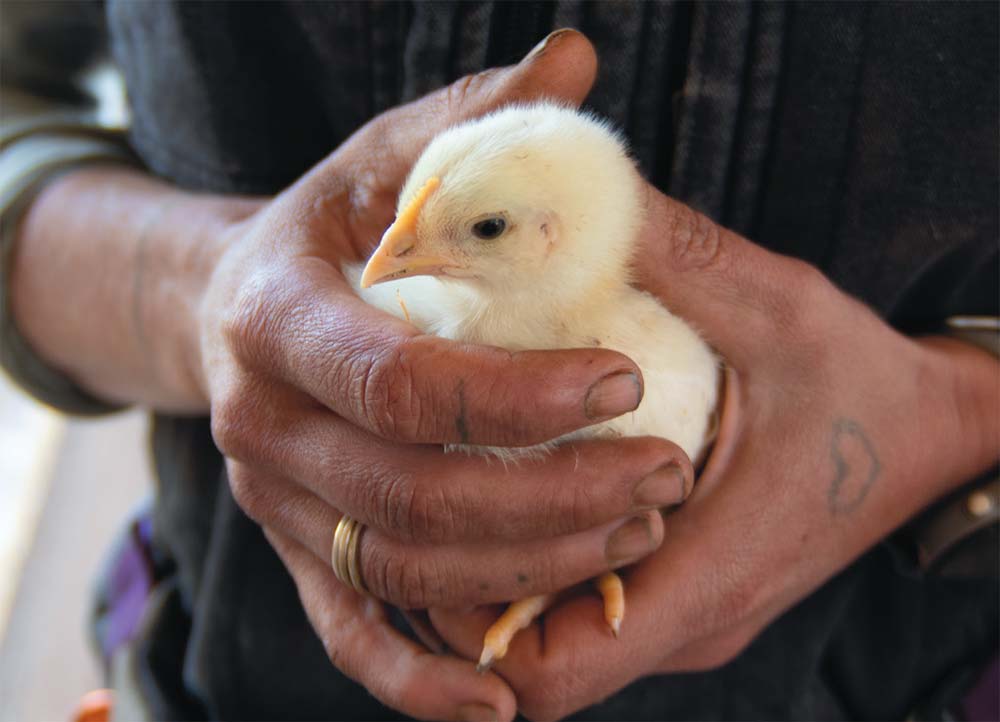
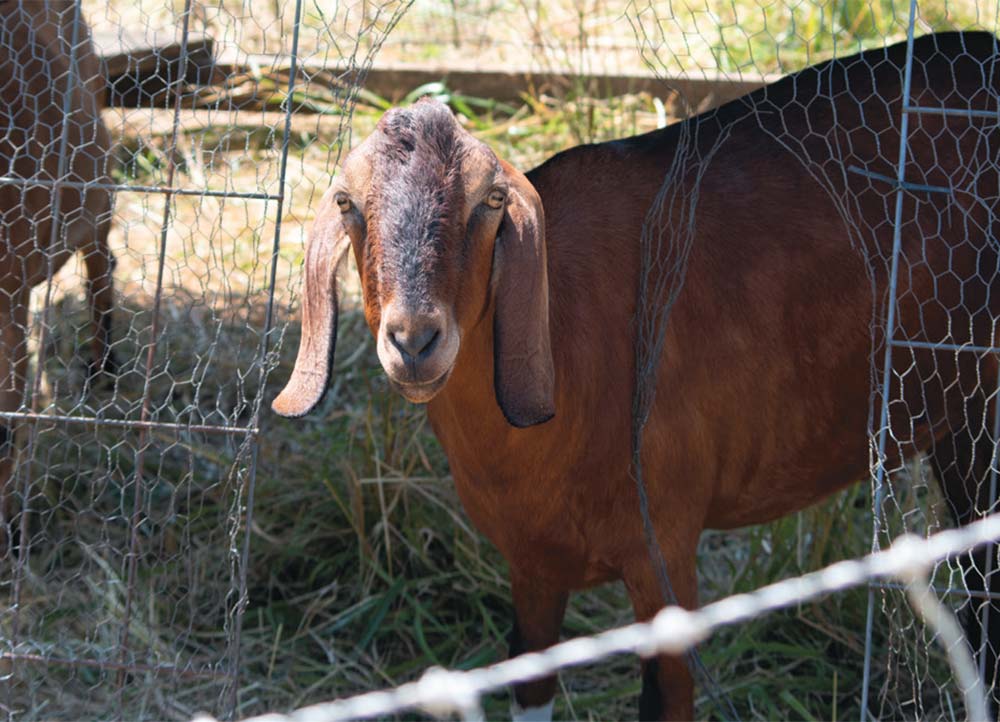
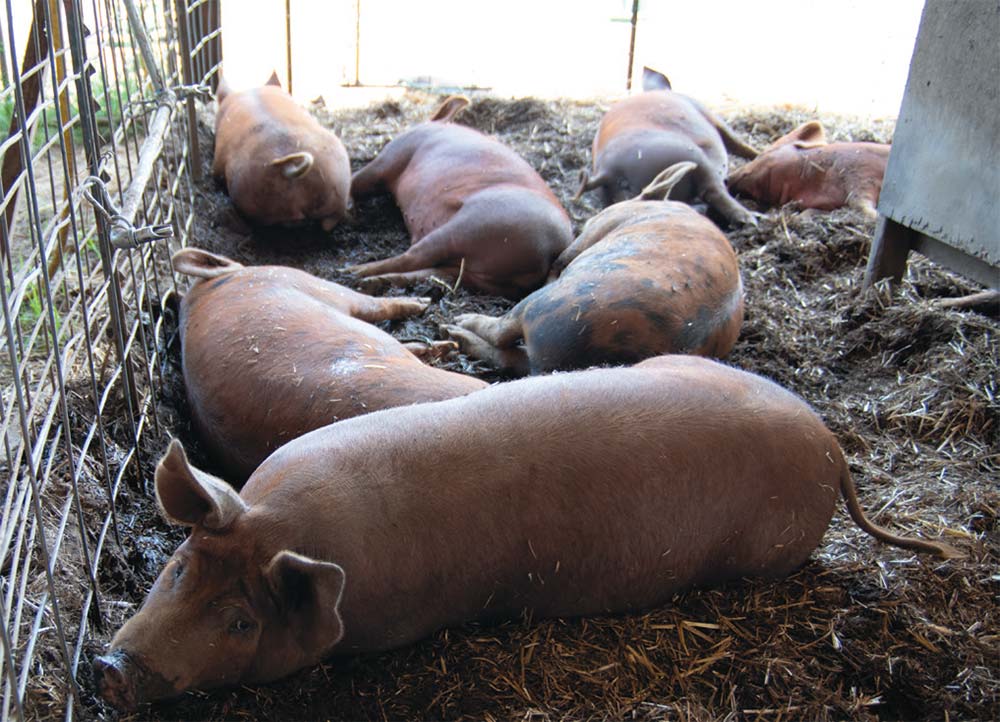
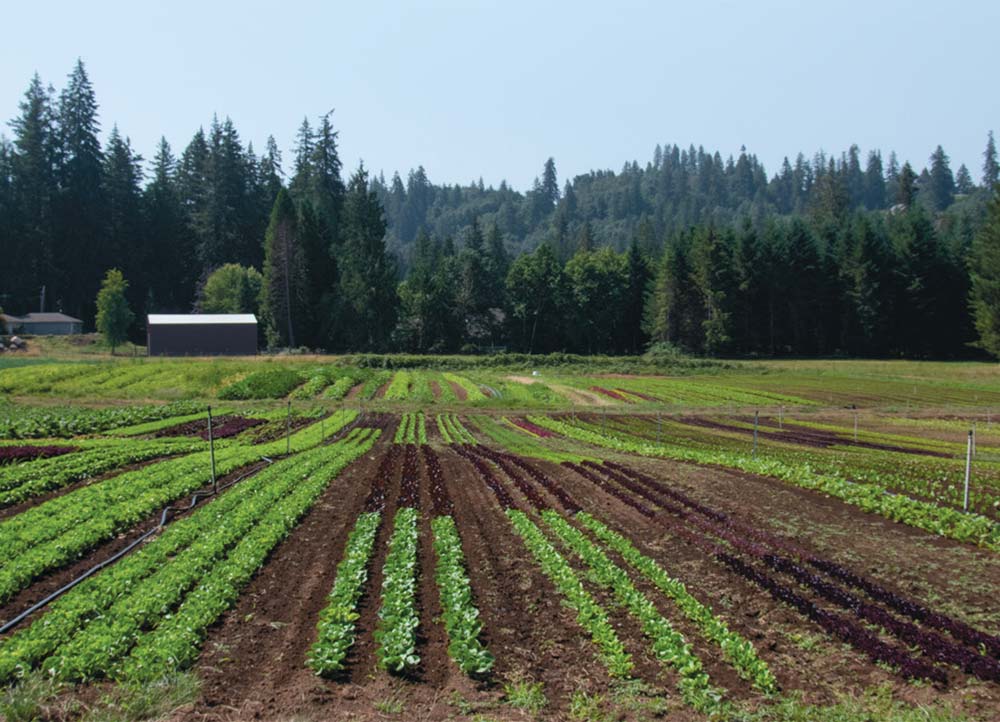
How does organic farming differ from biodynamic farming?
LT: When we combined our farms, we chose not to do biodynamic farming and plant by the biodynamic calendar. Instead, we focused on our organic practices, building soil health, business and infrastructure, and scaling up the farm. Certain biodynamic practices conflict with our organic certification practices. It felt hard to do both.
A primary practice of biodynamic farming is using cow manure and burying a cow horn on the property. This protocol of biodynamic agriculture would prevent us from harvesting during the season in which we used this manure. Therefore, it is not practical for us as we constantly try to turn beds over and get as much production as possible on the small farm.
Another biodynamic practice is producing your own compost. To do this on the scale we currently farm requires specialized skills and equipment that we do not possess. However, the heart and soul of both practices are still a big part of managing and running our farming.
What is your favorite part of organic farming?
LT: I know that our food is safe for our employees and the environment. Conventional farming uses chemicals and can harm people’s health. I am proud that we provide an environment that is safe for the earth, the people and the animals that are part of it. As an organic farmer, you are part of this “club” of earth lovers doing something hard that requires passion and drive.
We’re focused on our organic practices, building soil health, business and infrastructure, and scaling up the farm. Certain biodynamic practices conflict with our organic certification practices. It felt hard to do both.
A primary practice of biodynamic farming is using cow manure and burying a cow horn on the property. This protocol of biodynamic agriculture would prevent us from harvesting during the season in which we used this manure. Therefore, it is not practical for us as we constantly try to turn beds over and get as much production as possible on the small farm.
Another biodynamic practice is producing your own compost. To do this on the scale we currently farm requires specialized skills and equipment that we do not possess. However, the heart and soul of both practices are still a big part of managing and running our farming.
What is the most significant difference between your produce and what you find at the store?
LT: Our farm produce is fresh, while produce from a store is picked, stored, and then shipped. Our flavors are unbeatable.
Why did you choose to go with unique heirloom varieties?
LT: We are constantly balancing production and flavor. Hybrids are very uniform but do not always have excellent flavor. For example, we grow a tomato called Astiana from Piedmont, Italy. The seeds were brought from Italy by a local farmer in Oregon who no longer grows them, and we acquired some seeds. We grow it for the locals who love it. The tomatoes do not keep very well and are not what many would consider beautiful, but they have phenomenal flavor and are one of the best for canning and sauces. Customers covet them. We want to continue to grow these unique products because they have a place in our culture. We balance flavorful and unique things while matching the demands of being a small production farm.
Where can people find your products?
LT: Our products are available year-round at the Hollywood Farmers’ Market and about 50 local restaurants. We also have a year-round CSA program.
Do restaurants or people from your CSA ever request specific products?
LT: We send out a survey each year. For a few restaurants, we grow a “goose foot mix” lettuce with Lamb’s quarters, wild spinach, and other greens. Different restaurants have requested Celtuce, a Chinese stem lettuce that resembles a bolted stem.
How do you handle pest control on the farm in the autumn?
LT: At the farm, we use Remay, a fine mesh made from plastic and cotton that serves as a blanket for the crops. This blanket keeps out pests. We place Sluggo on the paths each year before planting the fall crops and removing the Remay. Sluggo has a metal compound in the mix, and the slugs will not cross it. Fall plantings include kale, Asian greens, radishes, turnips, arugula, a mustard mix, chard, spinach and herbs. We do use biological sprays when necessary.
Crop rotation is at the heart of organic farming and helps to aid soil health and prevent pests. We only keep chard in the ground for three or four weeks. Often, pests are attracted to things because they have been in the ground in one spot for a long time. Brussels sprouts are hard to grow organically because they stay in the ground for so long. Once pests have found the crop, they populate on iit. Rotating the crops helps keep the pests at bay. Last year, we had cucumber beetles, so we did a little spraying with biological products.
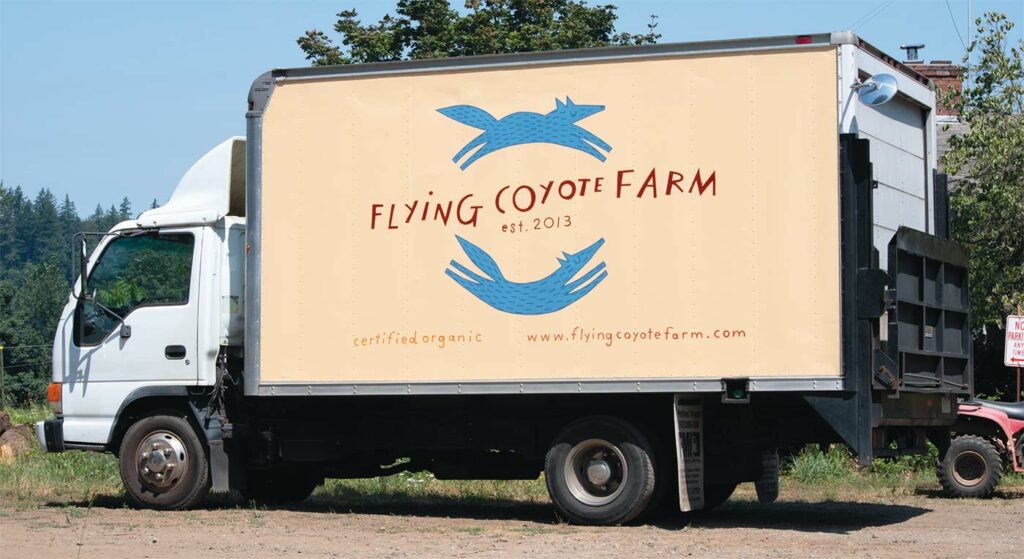
What sets Flying Coyote Farm apart from other local farms?
LT: We sell to our restaurants, CSA, and farmer’s markets all year. We are not just a vegetable farm; we sell chicken and pork and offer value-added products like salsa and sauerkraut. We are employee-focused, honoring people’s skills and fostering their curiosities. We have numerous feedback loops where our employees have opportunities for leadership and ownership of specifi c farm areas. I am passionate about diversity and providing employees with a healthy and safe environment.
RAISING ANIMALS THE RIGHT WAY
Lili grew up as a vegetarian, but as she entered adulthood, she chose to eat certain meats. She believes in eating the healthiest food possible, so she set out to learn the best practices for raising chickens and pork and now enjoys the bounty of meat from her farm.
How many animals do you have?
LT: We raise approximately 1,600 Cornish Cross chickens each year and 20 pigs. This year, we have a mix of Red Wattle and Big Black pigs. We also have five goats at the farm to keep the brush down. We harvest the pigs at about 210 days old and the chickens at eight weeks old.
Are your animals raised as Certified Organic?
LT: Our animals are not Certifi ed Organic because the rules are extremely strict and sourcing organic food [for them] is difficult. We buy locally grown and milled feed from Union Mills. It has no corn or soy and is non-GMO, but it is not organic. If we bought organic, most feed would be from outside the state or the country.
How do you handle predators?
LT: We have a Great Pyrenees dog that serves as our livestock guardian. Dan has a Rat Terrier that hunts rodents and rats on the property. He does not eat them but is very efficient at hunting them. Last year, we had a problem with moles, so we hired someone to trap them. However, Dan’s Rat Terrier caught as many moles as the trapper.
The organic practices used at Flying Coyote Farm illustrate the core of eco-gastronomy. Lili, Dan, and their team are enthusiastic about providing nutritious, quality food products without taxing the environment. Their healthy practices are sustainable, and they strive to leave the terroir better than they found it. Finally, they reach out to their clients for feedback to provide unique and delicious culinary delights that tantalize the tastebuds and surpass what can be found in today’s grocery stores.

